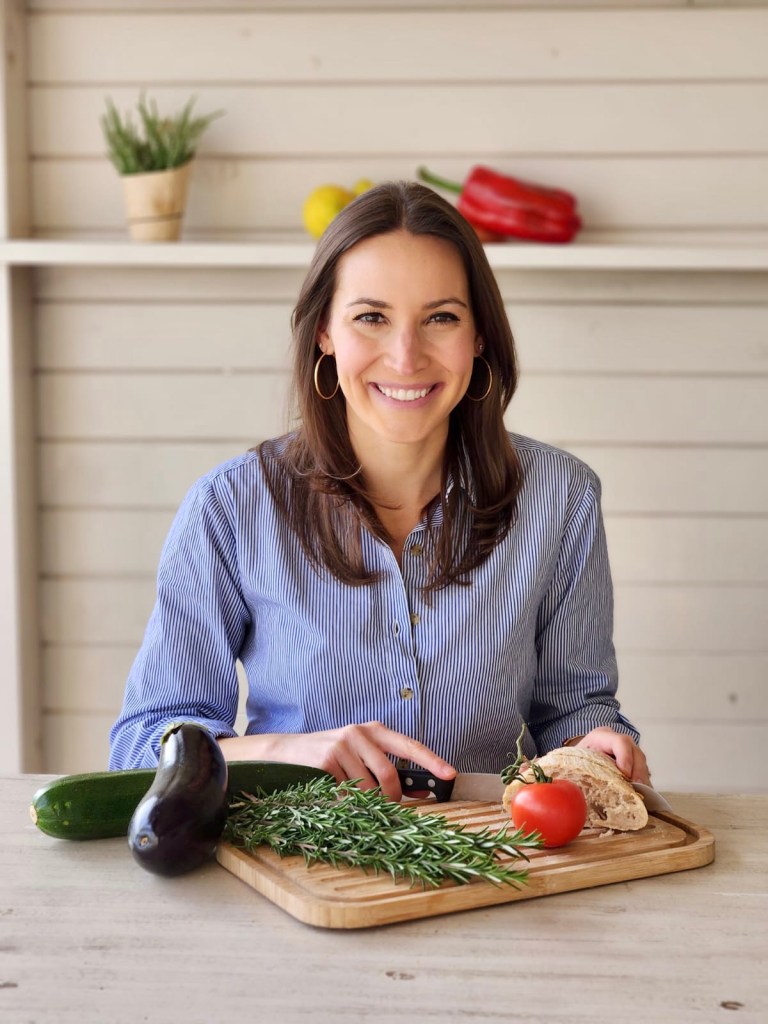Your cart is currently empty!
How to Build A Nutritious Smoothie

Smoothies can make really nutritious meals or snacks, if you make them correctly. Most people make the mistake of making smoothies that primarily consist of fruit. While fruit is very nutritious, it is primarily composed of carbohydrates and is unlikely to keep you feeling full for very long. It’s important to make a balanced smoothie that contains protein, fat, and/or vegetables in addition to a portion of fruit. This combination will not only help keep you feeling full for longer, but is also more blood sugar friendly.
In this post, I will discuss how to build a nutritious and balanced smoothie. You can mix and match ingredients based on your taste preferences, or you can check out my smoothie recipes linked here.
Key Smoothie Ingredients:

Fruits
Fruit adds natural sweetness to the smoothie. However, smoothies don’t need a large portion of fruit to taste delicious. I personally love adding frozen bananas or frozen berries to smoothies. Try using 1/2 to a full frozen banana or 1/2 cup of frozen berries. You can always adjust portions based on your taste preferences.
The key to making a delicious smoothie is using frozen fruit. Whether you buy frozen fruit or buy fresh fruit and freeze it, is up to you. However, using fresh fruit and ice is not the equivalent of using frozen produce.

Veggies
Smoothies are a great opportunity to add in some extra veggies. One of my favorite veggies to add to smoothies is frozen riced cauliflower. I love using frozen riced cauliflower because it adds bulk to the smoothie and gives it a creamy texture, but adds no flavor. Leafy greens, such as spinach and kale, also make a great addition to smoothies. Leafy greens won’t add much bulk to the smoothie and will give it a greenish color. Frozen beets are another great addition to smoothies- they taste naturally sweet and give the smoothie a fun, bright pink color.

Fat & Fiber
Avocados are a great source of healthy fats and fiber. They add a thick, creamy texture to any smoothie. However, don’t overdo it- if adding avocado to your smoothie, try adding 1/4 to 1/2 of an avocado, any more and the smoothie may taste too rich.
Nut and seed butters also make great healthy fat additions to smoothies. If adding nut or seed butter to a smoothie, look for one that contains no added oils or sugars.
Chia and flax seeds are packed with fiber and can easily be tossed into a smoothie. Fiber will help make the smoothie more filling and satisfying.

Protein
Protein is an important macronutrient because it’s very satiating. Nuts and seeds do contain some protein, however, adding a protein powder to a smoothie is an easy way to really bump up its protein content. It may take some experimenting to find a protein powder that you like the taste of. Some protein powders have a chalky, unappetizing taste and negatively impact the flavor of the smoothie, while others taste delicious. Note: Not all protein powders are safe to consume during pregnancy. If pregnant, consult your doctor or dietitian prior to consuming protein powders.
Greek yogurt is another way to add additional protein to a smoothie. Look for a plain greek yogurt without added sugar.

Flavors
Added spices and flavors can really take the taste of a smoothie to the next level. I personally love cinnamon – it has a naturally sweet flavor and I add it to almost all of my smoothies. Additionally, cacao powder can give a smoothie a delicious, chocolate flavor. Cacao powder tastes bitter by itself and needs to be combined with something sweet, like fruit, to balance out the flavor.

Liquid
The last key ingredient to build a nutritious smoothie is the liquid to blend it all together. You can use any kind of milk, dairy or non-dairy, to make the smoothie. Choose a milk that is unsweetened to avoid unnecessary added sugars.
The portion of the liquid used will change the consistency of the smoothie. To make a thick, smoothie bowl to be eaten with a spoon, add less liquid. You may need a high-power blender, like a Vitamix, to properly blend this kind of smoothie. If you prefer to make a smoothie to be drank through a straw, add additional liquid to create a thinner texture.

Mel is a registered dietitian who specializes in women’s nutrition (fertility, prenatal, and postpartum) as well as nutrition for busy professionals. She is passionate about helping others live a healthy lifestyle that is practical and sustainable for them. Whether you are pregnant, postpartum, or a busy individual, she is here to make nourishing yourself simple and not stressful.
One response to “How to Build A Nutritious Smoothie”
-
[…] making fro-yo (sometimes with protein powder) and considering it a smoothie. In fact before I read Mel’s post, I never considered vegetables part of a smoothie. At some point I “learned” that […]
About Mel

Hi, I’m Mel! I am a registered dietitian who specializes in women’s nutrition (fertility, prenatal, and postpartum) as well as nutrition for busy professionals. I am passionate about helping others live a healthy lifestyle that is practical and sustainable for them. Whether you are pregnant, postpartum, or a busy individual, I’m here to make nourishing yourself simple and not stressful. Read More
Subscribe
Enter your email address to follow Well By Mel Nutrition and receive notifications of new recipe posts by email.







Leave a Reply